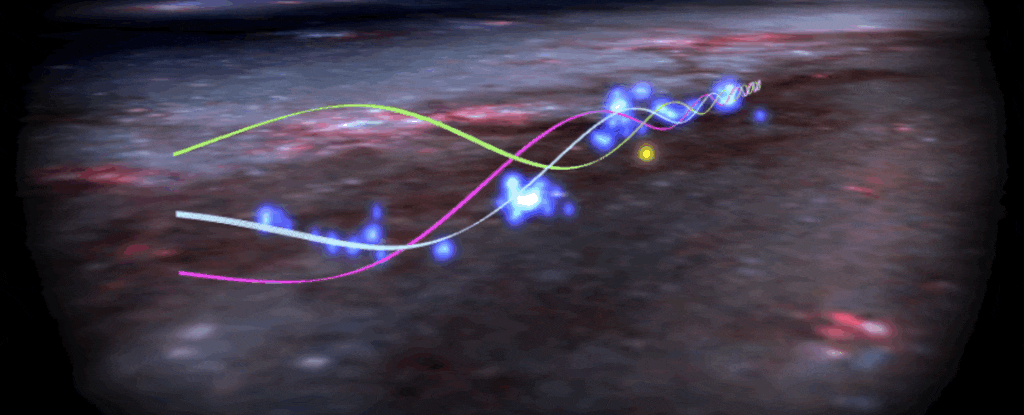
The amazing Radcliffe wave in our Milky Way galaxy not only looks like a wave, it moves like one
Just a few years ago, astronomers discovered one of the Milky Way's greatest mysteries: In our Sun's backyard, it turns out, there is a huge wave of gas clouds, where countless stars are being born.
This particular Radcliffe wave structure is named after him Harvard Radcliffe Institute That made this discovery. These same researchers are now writing in nature The Radcliffe wave not only looks like a wave, but moves like a wave. It ripples through space like a snake, like the “wave” fans sometimes make in the stadium.
“By using the motion of young stars born in Radcliffe wave gas clouds, we can trace the motion of their gases to show that the Radcliffe wave is indeed rippling,” said lead researcher Ralph Konetzka of Harvard University.
Discovery of the Radcliffe wave
As early as 2018, astronomers were working on a 3D map of the nursery of stars near the Sun. Using brand new data from the European Space Agency's Gaia mission and data-hungry 3D mapping technology, they found a pattern that led to the discovery of the Radcliffe wave in 2020.
“It's the largest coherent structure we know of, and it's very close to us,” says Katherine Zucker, a researcher at Harvard University. “It was there all along. But we didn't know it because we couldn't build such high-resolution 3D models of the distribution of gas clouds around the Sun.” The Radcliffe wave is truly gigantic, measuring 9,000 light-years long and 500 light-years from our sun.
Better data
The 2020 map clearly showed the presence of the Radcliffe Wave, but measurements were not yet good enough to know if the wave was moving as well. But this will be possible in 2022 with the help of newer Gaia data. This allowed astronomers to better locate young star clusters and saw that the Radcliffe wave was indeed wavy.
Gaia mission
The European Space Agency's Gaia mission aims to create an extremely accurate 3D map of more than a thousand million stars in our Milky Way galaxy and beyond. Gaia examines its movement, brightness, temperature and composition. This huge number of stars will provide data that can answer many questions about the origin, structure and evolutionary history of our galaxy.
Astronomers talk about a “traveling wave” that moves in space and time. This makes it more like the next wave of the sports field than you might think. Because just as people stand and sit one after another, the star clusters also move up and down, creating a pattern that moves across the entire area. “Just as fans in a stadium are pulled into their seats by Earth's gravity, the Radcliffe wave is rippled by the Milky Way's gravity,” Konetzka said.
More questions
But now that we know that, more interesting questions arise, because no one knows what causes a Radcliffe wave and why it moves the way it does. “Now we can start testing all kinds of different theories about why this wave formed in the first place,” Zucker says. “These theories range from supernova explosions to dwarf galaxies colliding with our own Milky Way.”
Dark matter
However, researchers already know more about how much dark matter is needed for the gravity responsible for the wave motion. “It turns out that there's no real need for any dark matter to explain the motion we see,” Konetzka answers. “The gravity of ordinary matter alone is enough to set the wave in motion.”
This discovery also raises questions about how important these types of waves are in the Milky Way and beyond. Since the Radcliffe wave appears to form the backbone of the Milky Way's nearest spiral arm, the wave's undulation may imply that the galaxy's spiral arms are always oscillating, making galaxies more dynamic than previously thought.
“The question is what causes the displacement that leads to the waves we see,” says researcher Alyssa Goodman. “Does this happen everywhere in the galaxy? Or even in all galaxies? Does it happen occasionally or constantly?” So the discovery of the wavy wave raises more questions than it answers.

“Web maven. Infuriatingly humble beer geek. Bacon fanatic. Typical creator. Music expert.”

